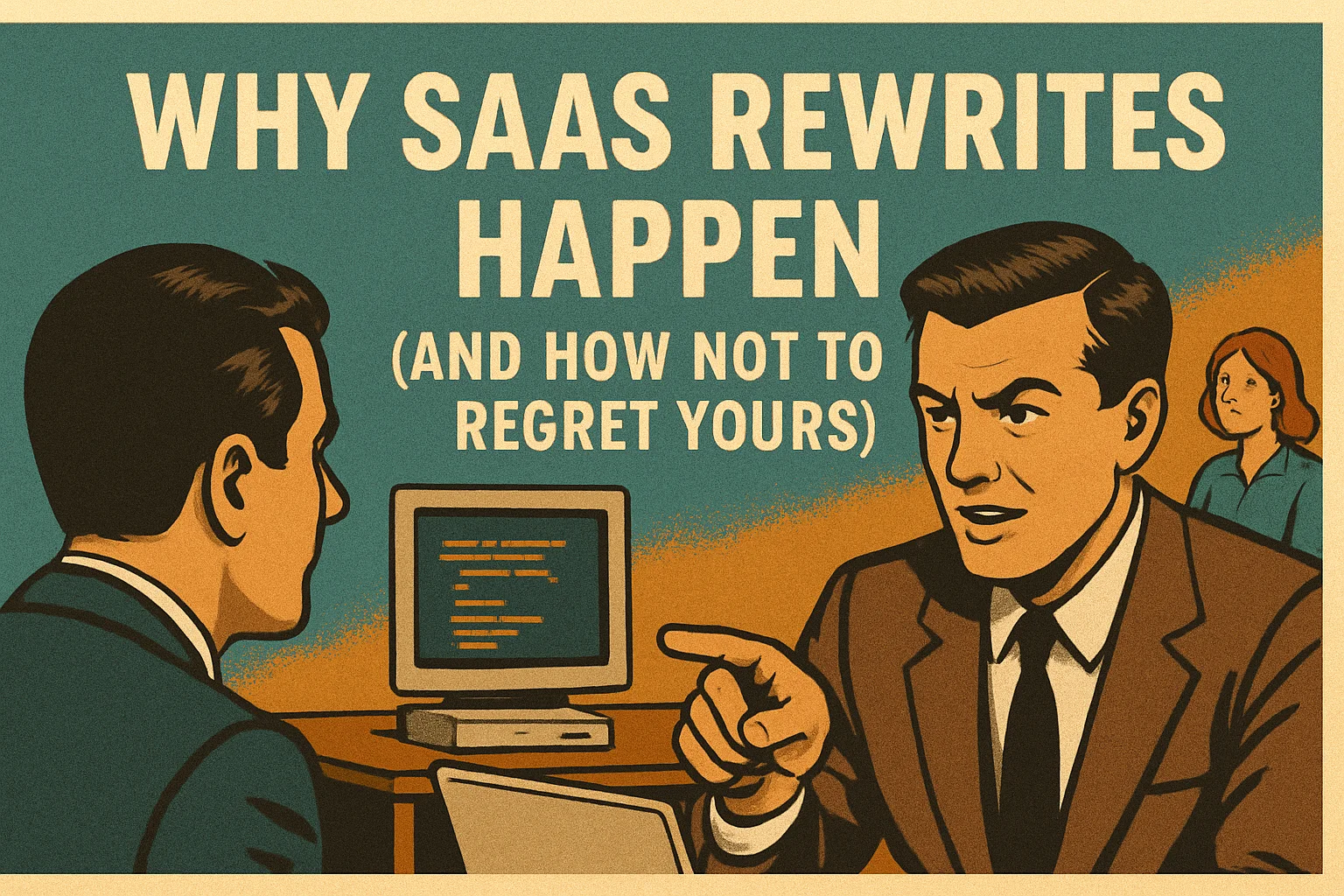When Code Gets Too Old to Save
If your SaaS platform starts feeling like it’s held together with duct tape, you’re not alone. Most startups reach a point when their codebase—once lean and full of promise—starts resisting every new feature like a grumpy old man yelling at change. That’s when the phrase "We need to rewrite this from scratch" enters the Slack channel.
A rewrite might sound like the magical fix. But before you torch your legacy code, ask yourself: Do we know why the old one failed? Because if you don’t, your shiny new codebase might just age the same way.
Why Rewrites Become Inevitable
1. Technical Debt Is Crushing You
If your dev team spends more time fixing regressions than building features, you’re likely drowning in technical debt. Early-stage code is usually written fast to prove product-market fit—not to last. But the debt piles up. Eventually, there’s no way forward without a reset.
2. Your Stack Can’t Scale
Tech choices that worked fine for 100 users crumble under 10,000. Maybe your monolith can’t handle async jobs. Maybe it’s built on a no-longer-maintained framework. Or perhaps your cloud bills are skyrocketing because of architectural inefficiencies.
3. Developer Onboarding Is a Nightmare
You know it's bad when new hires need weeks just to understand how data flows through the system. Poor documentation, tangled dependencies, and outdated libraries slow your velocity to a crawl.
4. Your UX/UI Is Frozen in Time
Customers expect clean, responsive interfaces. If your frontend tech is so old it’s allergic to mobile responsiveness, rewriting the frontend in modern frameworks (like React or Vue) becomes a must.
5. Compliance and Security Risks
Regulations change. If your current setup can’t meet new GDPR or SOC 2 standards, that’s a ticking legal time bomb. Starting fresh with secure, auditable code might be the safest option.
How Not to Regret Your Rewrite
1. Don’t Rebuild Everything At Once
Big bang rewrites usually fail. The better approach is progressive refactoring. Rebuild module by module. Keep the lights on while you upgrade the wiring.
2. Validate Before You Code
Rewrite only after interviewing users, mapping product gaps, and confirming your new architecture solves specific problems. Otherwise, you’re just re-skinning the same pain points.
3. Budget Like It’s a New Product
Rewrites take longer and cost more than you think. Don’t expect to reuse timelines or budgets from the old build. Treat it like building a fresh SaaS MVP—with planning, staging, and testing included.
4. Choose the Right Stack (For Now and Later)
Pick tech that solves today's bottlenecks but also has a future. Avoid niche frameworks with tiny communities. Balance modern dev experience (DX) with long-term maintainability.
5. Set Milestones with Business Impact
Your rewrite shouldn’t just feel better to engineers. It should improve onboarding speed, reduce churn, lower infrastructure costs, or speed up feature deployment. If it doesn’t move business KPIs, you’ve likely rewritten for the wrong reasons.
Still Thinking About a Rewrite?
Before you call in the rebuild crew, ask yourself:
- Will this improve time-to-market?
- Can we scale better after this?
- Will customers notice (and love) the difference?
If the answer to all three is yes—then go ahead. Just don’t expect it to be painless.
We’ve helped dozens of SaaS companies survive the rewrite and come out stronger. Let’s talk if you're on the edge of the same decision.




